Some journeys remain dreams for a long time; you have to wait patiently for the moment to set out. One of my earliest introductions to South America was the work of the Colombian novelist, Gabriel García Márquez. I was especially drawn to the socio-political narratives that predated the marvellous reality of One Hundred Years of Solitude (Cien años de soledad), novels such as No one Writes to the Colonel.
Several years after those early readings I achieved my goal of making a circuit of García Márquez’s home turf in northern Colombia, from Barranquilla, where he worked as a reporter in the 1950s, to Cartagena, where he had a house for many years.
My route took me via Santa Marta to Aracataca, García Márquez’s birthplace and the inspiration for the fictional town of Macondo. Thence to Valledupar, home of the vallenato music that was one of the writer’s great loves. My next stop was Santa Cruz de Mompox (or Mompós). With some places there is no doubting García Márquez’s historical relationship, but to my mind Mompox holds rather a curious place in García Márquez-lore.
It is frequently praised as a most García Márquez-like place, bearing “an uncanny resemblance to Macondo”, some say, and used as a location in the film versions of Chronicle of a Death Foretold and Love in the Time of Cholera. And it is true that his wife lived there for a while, but did García Márquez himself ever go there? There is some dispute about that.
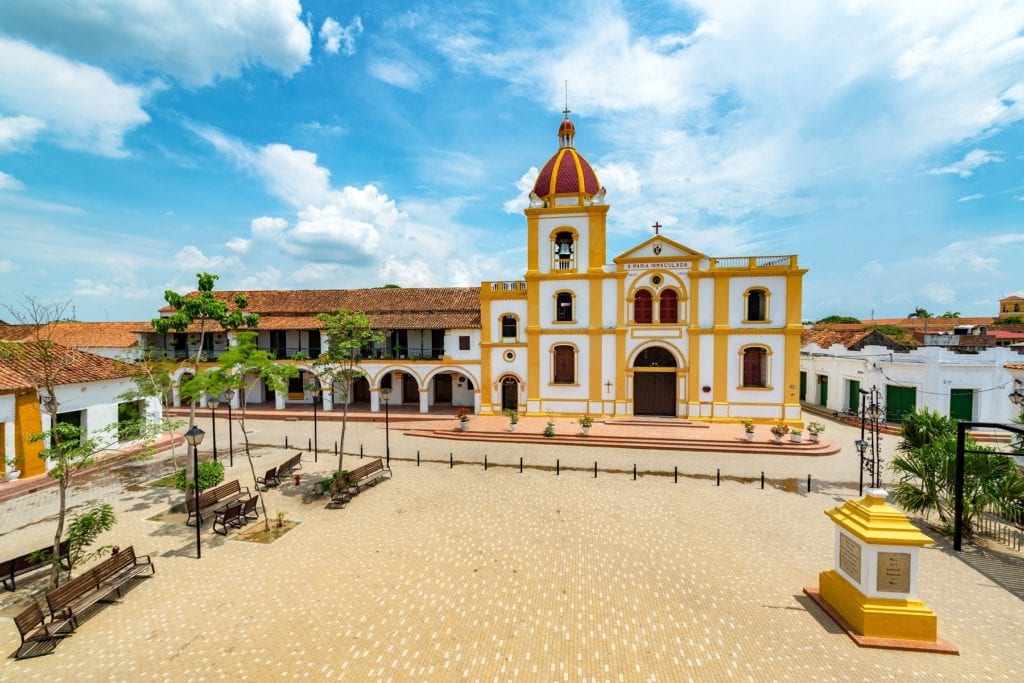
There used to be no quick way to get to Mompox because the town is built on land between two arms of the Río Magdalena. In whichever direction you went, at some point you had to take a ferry. My so-called direct bus from Valledupar dropped me at Santa Ana where I took a motorised canoe to Talaigua Nuevo, then a bum-numbing motorbike pillion into the town. This broke up the road journey and added a sense of adventure, but it also emphasised Mompox’s isolation, its atmosphere of being lost in time.
A window into the past
The administrative and commercial buildings that face the Río Magdalena on Calle de la Albarrada date from when Mompox was a prosperous port. But by the time Simón Bolívar, the Liberator, passed through, decline had already set in. The Museo Cultural de Arte Religioso on Calle Real del Medio proudly states that it was Simón Bolívar’s home on his several visits and, as a plaque in the town centre says, to Mompox he owed his glory.
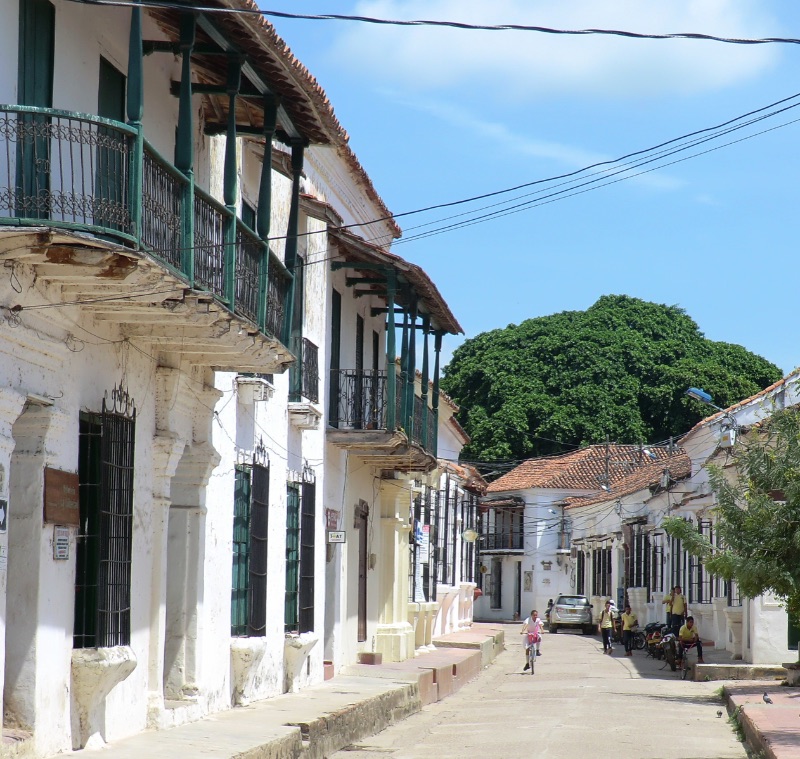
It was here that he recruited the first troops for the army that liberated South America. His final journey downriver in 1830 is narrated in the only García Márquez novel to feature Mompox heavily: El general en su laberinto. There the town is described as “very ancient and long-suffering…devastated by war, debased by the turmoil of the Republic, decimated by smallpox.” The town’s fortunes were to fall further. It was completely neglected after the branch of the river on which it sits became unnavigable in the early 20th century.
Nowadays tourism has benefitted from the lack of development in the 19th and 20th centuries. The colonial architecture is well preserved and lovingly refurbished and it has UNESCO World Heritage status. If it weren’t for the fleets of motorbikes and the plastic household items stacked up outside the riverside market, you could easily believe you had stepped into another century.
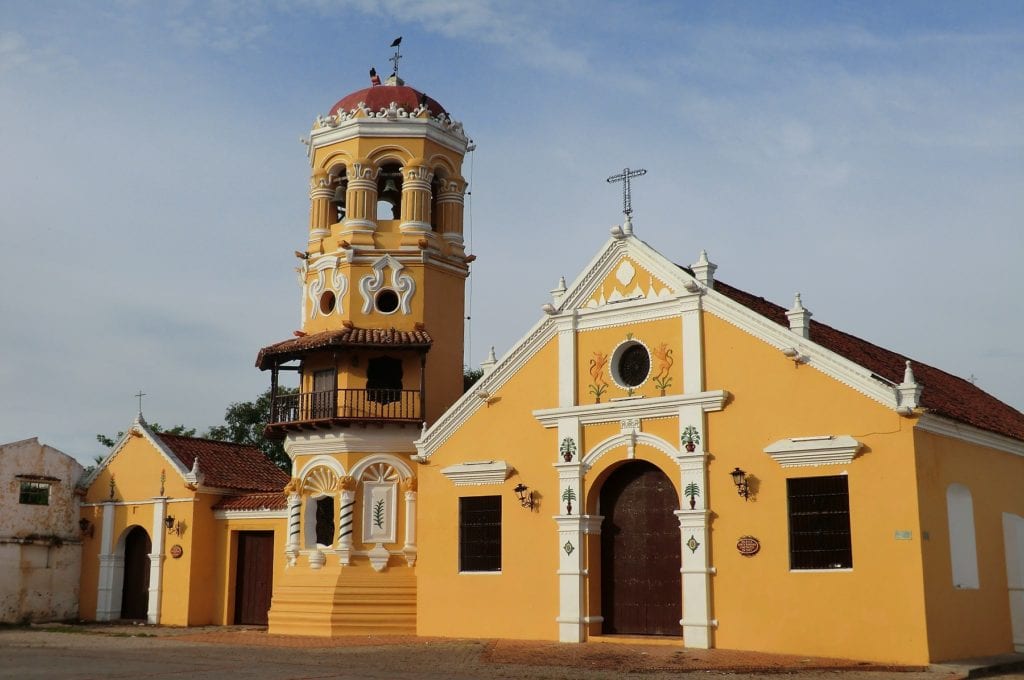
The predominantly white and yellow-ochre buildings shimmer in the sun while balconies and painted wooden colonnades cast strong shadows for welcome shade from the overwhelming heat. Churches such as Santa Bárbara and San Francisco are beautiful statements of bold colour. In the Claustro de San Agustín, an escuela taller teaches youngsters local skills, such as jewellery and carpentry, and other dark interiors hide shops selling filigree and rocking chairs.
Like many Colombian towns Mompox was beset by the hatred between Liberals and Conservatives that fuelled the War of a Thousand Days and La Violencia in the 20th century which feature in García Márquez’s books. Calle 18 was the dividing line between the two factions in town; it continues through the cemetery, dividing the tombs into political wings.
Natural profusion
I ate lunch in a riverside fish restaurant while the brown waters of the Magdalena glinted as they slid by the steps leading down to the river’s edge. Later in the afternoon I took a ferry across the river and headed away from the water. In next to no time I came to a small ranch with cattle pens. Behind the fencing was a stretch of water and marshland beyond which were lines of trees. I cannot recall seeing so many birds in one place at one time.
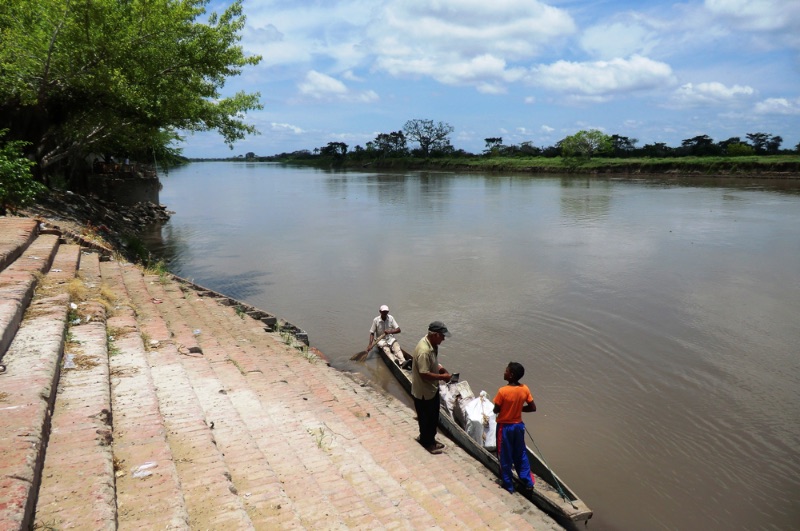
I didn’t have to move to see swallows, three types of hawk, herons, egrets, jacanas, flycatchers and goodness knows what else. Birdwatching trips go further into the marshes, yet another highlight in Colombia’s roster of amazing places to see birds (the country has more bird species than any other country in the world: 1878 – BirdLife International).
The Mompox mosquitoes are ferocious, allegedly, but they were taking a couple of nights off when I was there. So that I did not feel hard-done-by, other members of the insect world came out at dusk, thousands of cucharrones (like small black cockroaches) flying into streetlamps and the floodlights that illuminate the historical buildings.
My friend and I took our beers on to the roof terrace to see the city after dark, to watch the owls flying above the rooftops and enjoy the lightshow of a distant thunderstorm. Even though we turned the roof lights off, the clouds of cucharrones drove us indoors. Next morning black insect carcases covered the roads and crunched under foot until they were swept into piles ready for disposal.
The river of nostalgia
Leaving Mompox I took a 4am pick-up to Cartagena and, after an hour, arrived at La Bodega, the ferry port for another crossing of the Magdalena. Fast launches skipped across the river to Magangué, but I was to stay with the vehicle and take the battered old flat-bed ferry that took the trucks, buses and motorbikes an hour downstream.
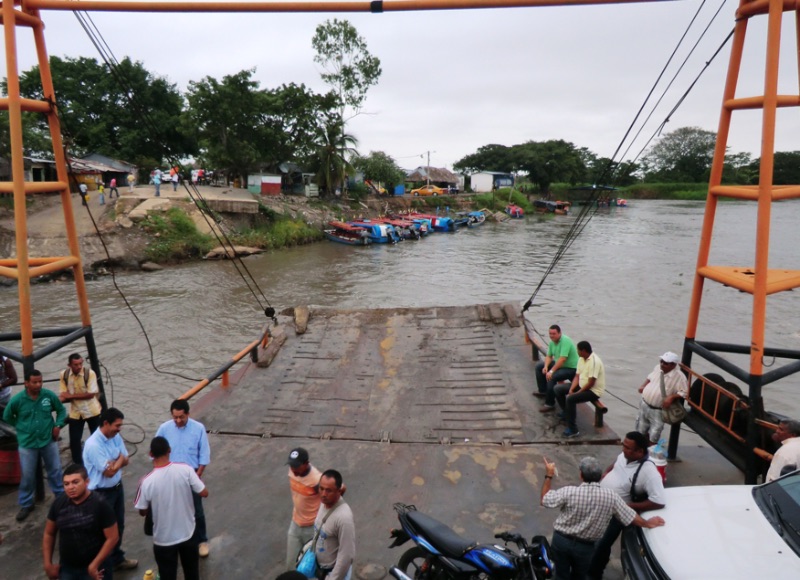
The Magdalena is rightly the focus of entire books on its own, such as Love in the Time of Cholera and Michael Jacobs’s The Robber of Memories. Its recent history coincides with the demise of transport systems: the champanes (vessels invented by the Spanish colonists) were killed off by the paddle steamers, which were superseded by the railway from Bogotá to Santa Marta, only to yield to the main road north which heaves with tractomulas (articulated trucks).
García Márquez had a conflicted relationship with the river. He travelled up and down it 11 times on his way from the coast to study near Bogotá. It evoked strong memories of his youth, but he lamented the massive destruction of the wildlife in and beside the water, even in his own lifetime. In 1961 he heard that one of the paddle steamers that he rode had burnt to cinders in Magangué and he knew that his childhood had died and that the “river of nostalgia had gone to hell.”
A changing landscape
In May this year, a four-year megaproject to build two bridges, Santa Lucía and Roncador (Colombia’s longest), were completed between Yatí, near Magangué, and La Bodega. Once restrictions imposed to prevent the spread of Covid-19 are lifted, the journey time from Mompox to the coast will be reduced significantly.
Similarly suspended are flights to the newly extended local airport (from Cartagena, Medellín and Bogotá), which were due to multiply in time for Mompox’s famous Easter Week celebrations. When the lockdown is over, who knows what all this will mean for tourism and river transport: an end to economic isolation, or an end to Mompox’s magic realism bubble?
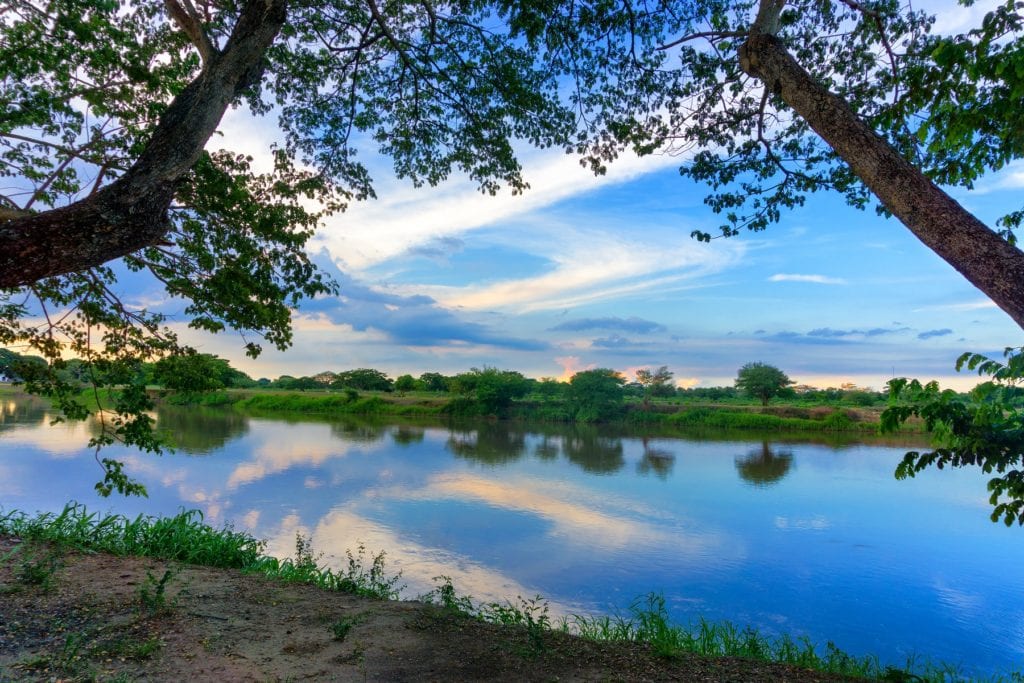
For me it wasn’t a journey of spectacular scenery or high adventure, just a potter through a nostalgic part of South America that happens also to be the melting pot for the imagination of one the world’s greatest novelists. It tied together my studies of García Márquez and my love of travel in South America: the unpredictability, being able to poke around and indulge my guidebook writer’s curiosity.
García Márquez is often quoted as saying that both the Río Magdalena and Mompox are mirages. Of the town he has Bolívar say, “Sometimes we dream about her, but she does not exist.” And the river is “an illusion of memory.”
My recollections of silent streets in the midday heat, clouds of insects, bumpy roads and ramshackle ferries are already muddied, like the river. But no matter, the images of places I had read about in novels had become my reality, marvellous, and out of time already.
Ben Box is the author and editor of The South American Handbook and a number of other guidebooks on Latin American and the Caribbean. He is also the author of García Márquez: El coronel no tiene quien le escribe (Grant & Cutler Critical Guides to Spanish and Latin American Texts and Films, 2000).